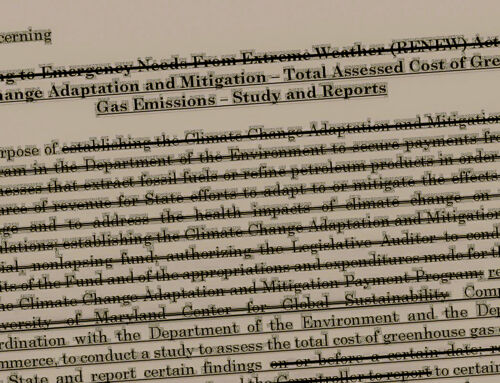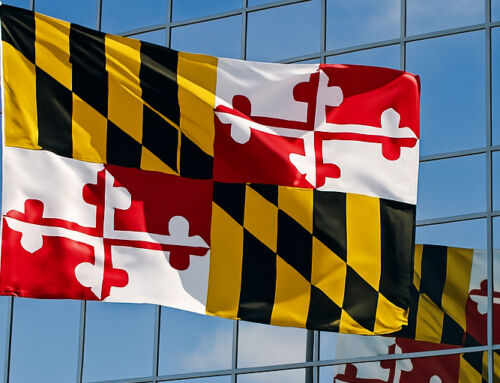View by Topic
Recent Articles
-
New Environmental Laws from the 2025 Maryland Legislative SessionSaturday, April 26th, 2025
-
Migratory Bird Treaty Act Does Not Prohibit Incidental Take – AgainSaturday, April 19th, 2025
-
President Trump’s Bold Step to Rein in State Overreach in Climate ChangeSaturday, April 12th, 2025
-
Mandatory GHG Disclosures in Maryland Real Estate ContractsSaturday, April 5th, 2025
View by Month/Year
“Green Building Law Update” Headlines
Recent Articles & News from
Stuart Kaplow’s blog
at GreenBuildingLawUpdate.com
- BEPS Redux: The Most Far Reaching Environmental Legislation of the 2025 Maryland General Assembly May 4, 2025
- New Environmental Laws from the 2025 Maryland General Assembly Session April 27, 2025
- Migratory Bird Treaty Act Does Not Prohibit Incidental Take – Again April 20, 2025
- President Trump’s Bold Step to Rein in State Overreach in Climate Change April 13, 2025
Subscribe to the Green Building Law Update!
Stuart Kaplow brings his expertise and extensive experience to the table with his unique digital publication, "Green Building Law Update". Subscribers receive regular updates to keep them informed about important issues surrounding Environmental Law, Green Building & Real Estate Law, as well as the emerging demand for Environmental Social Governance (ESG).
Get fresh content through the lense of Stuart Kaplow's cutting-edge expertise, innovative commentary and insider perspective. Don't miss another issue! Subscribe below.

Reducing Your Greenhouse Gas Emissions
As governments enact mandatory greenhouse gas emission laws and as businesses voluntarily make “net zero” pledges, we are increasingly working with clients, first to understand and calculate their GHG emissions, then to implement strategies for efficacious yet frictionless reductions.
An example of what businesses are reacting to is Maryland’s new statutory mandate that buildings, commercial, multifamily, and more with a gross floor area of 35,000 square feet or more, must achieve a 20% reduction in net direct GHG emissions (i.e., from Scope 1 sources only?) before January 1, 2030, a 40% GHG reduction before January 1, 2035, and be net zero before January 1, 2040.
The purpose of this post is not to question the relative merit of such a regulatory scheme, especially given that the commercial and residential economic sectors combined are only 13% of total U.S. GHG emissions, but rather to point out strategic responses for business where large first dollar costs will be involved.
As tracked by the U.S. EPA, GHG emissions from the residential and commercial sectors, which includes all homes and commercial businesses (excluding agricultural and industrial activities), come from direct emissions including fossil fuel combustion for heating and cooking needs, management of waste and wastewater, and leaks from refrigerants (all of which is dwarfed by “indirect” emissions that occur offsite but are associated with the use of electricity consumed by homes and businesses).
Direct emissions are produced from residential and commercial activities in a variety of ways:
- Combustion of natural gas and petroleum products for heating including water heating and cooking needs emits carbon dioxide (CO2), methane (CH4), and nitrous oxide (N2O). Emissions from natural gas consumption represent 79% of the direct fossil fuel CO2 emissions from the residential and commercial sectors in 2020. Coal consumption is today a minor component of direct energy use.
- Organic waste sent to landfills emits CH4.
- Wastewater treatment plants emit CH4 and N2O.
- Anaerobic digestion at biogas facilities emits CH4.
- Fluorinated gases (mainly hydrofluorocarbons, or HFCs) used in air conditioning and refrigeration systems can be released during servicing or from leaking equipment.
Be clear that it is not easy nor inexpensive to achieve a 20% reduction in net direct (only) GHG emissions.
Of note, total residential and commercial greenhouse gas emissions, including direct and indirect emissions, in 2020 have decreased by 5% since 1990. Greenhouse gas emissions from on-site direct emissions in homes and businesses have increased by 2% since 1990. Additionally, indirect emissions from electricity use by homes and businesses increased from 1990 to 2007 but have decreased since then to approximately 10% below 1990 levels in 2020.
We work with clients to identify opportunities to reduce emissions from businesses including multi family housing. Those options often include:
Green building. Homes and commercial buildings use large amounts of energy for heating, cooling, lighting, and otherwise. Green building practices like LEED can allow new and existing buildings to use less energy to accomplish the same functions, leading to fewer greenhouse gas emissions. Techniques to improve building energy efficiency include better insulation; more energy-efficient heating, cooling, ventilation, and refrigeration systems; efficient lighting; passive heating and lighting to take advantage of sunlight; and the purchase of energy-efficient appliances and electronics.
Wastewater treatment. Drinking water and wastewater systems account for more than 2% of energy use in the U.S. By incorporating energy efficiency practices into their water and wastewater plant, municipalities and utilities can save 15 to 30% in energy use and by reducing water use, including lower temperature and less hot water, most businesses can achieve significant reductions at little if any cost.
Waste management. When solid waste decomposes in landfills, it creates landfill gas, which is primarily comprised of CO2 and CH4. There are a number of well established, low-cost methods to reduce greenhouse gases from consumer waste, including recycling programs, waste reduction programs, and landfill methane capture programs.
Air conditioning and refrigeration. Commonly used refrigerants in homes and businesses include ozone-depleting hydrochlorofluorocarbon (HCFC) refrigerants, often HCFC-22, and blends consisting entirely or primarily of hydrofluorocarbons (HFCs), both of which are potent greenhouse gases. In recent years there have been several advancements in air conditioning and refrigeration technology that can help homes and businesses reduce both refrigerant charges and refrigerant emissions. For instance, we have worked in the retail food sector assisting owners in reducing leakage from equipment and that has dramatic costs saving implications while contributing significantly to repairing the planet.
Make no mistake, increasing numbers of local and state governments as well as the federal government are mandating GHG emission reductions. And this does not even consider the self-inflicted “Net Zero by 2030” and similar pledges that many businesses are announcing. Beyond first dollar costs, this is a risk issue for most organizations that occupy a habitable structure. So, it is no surprise we are increasingly working with clients, first to understand and calculate their GHG emissions, then to assist them in implementing strategies for efficacious yet frictionless GHG emission reductions.









